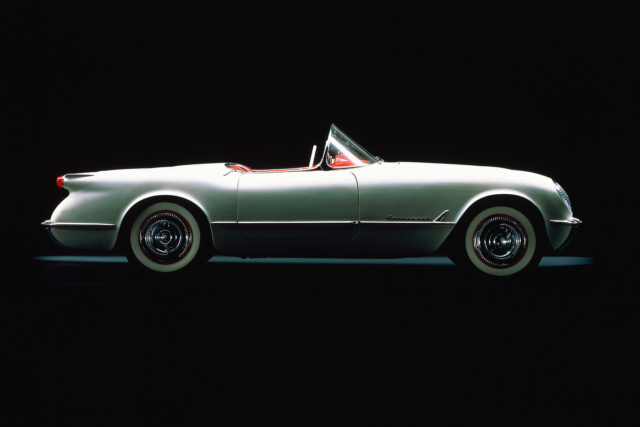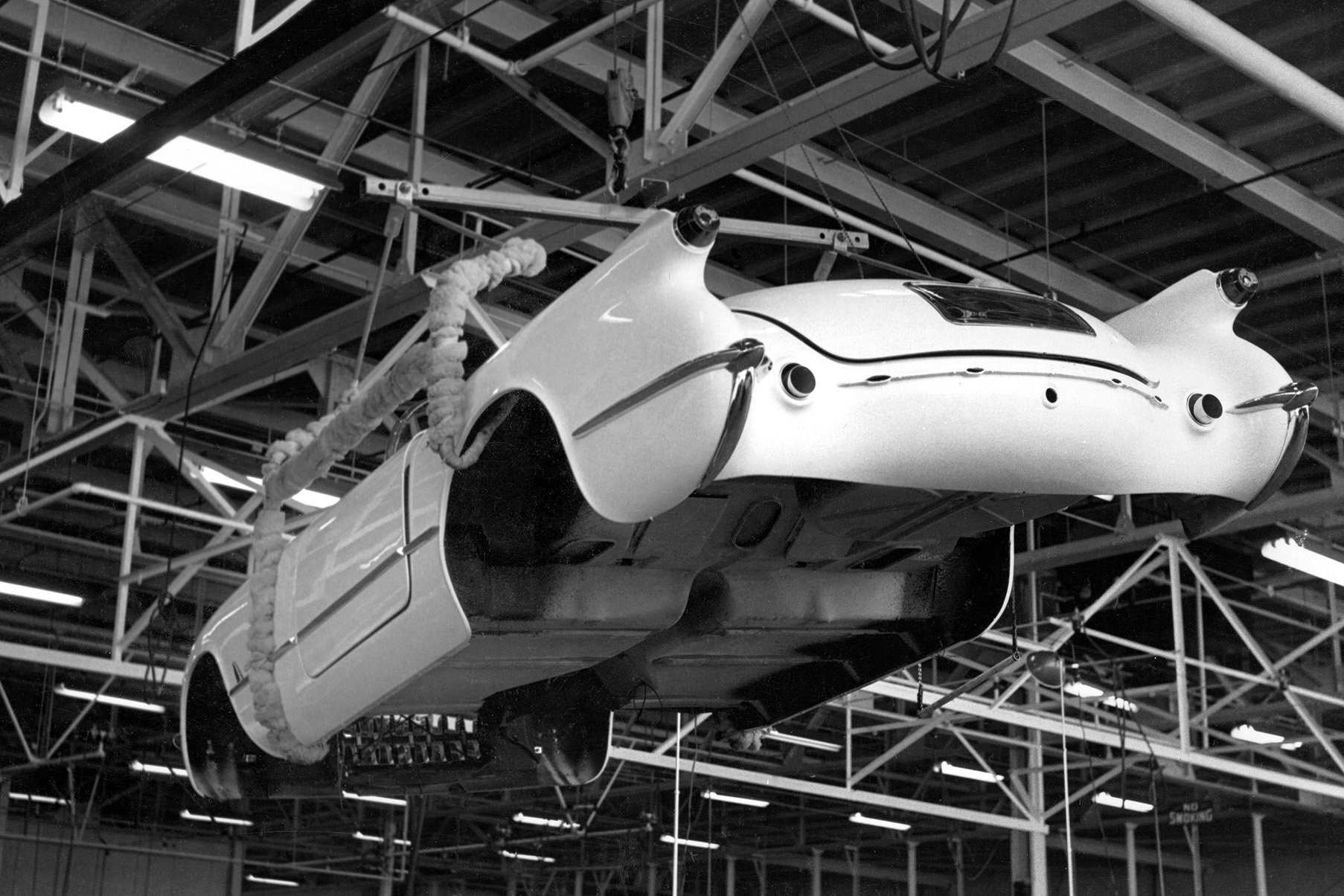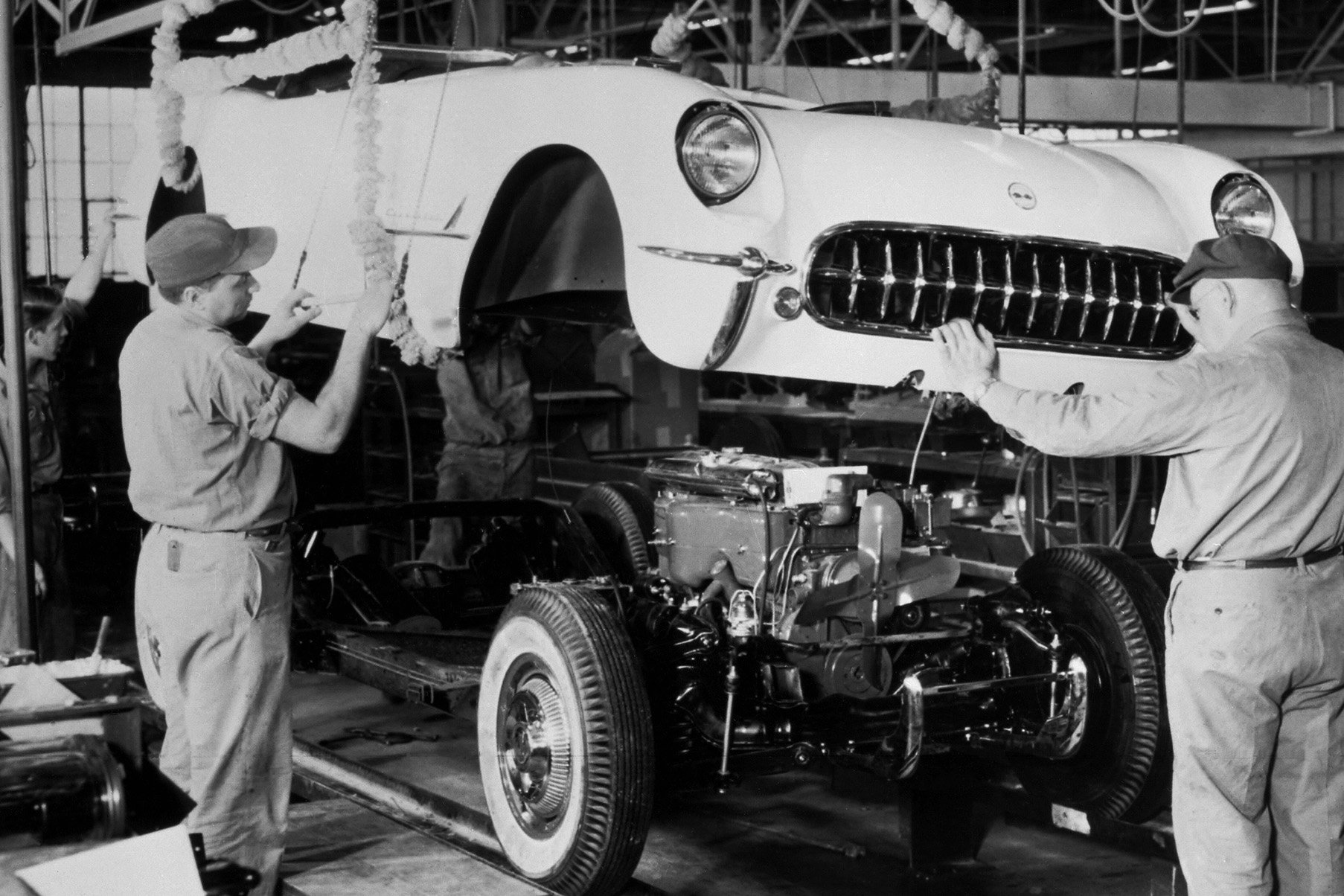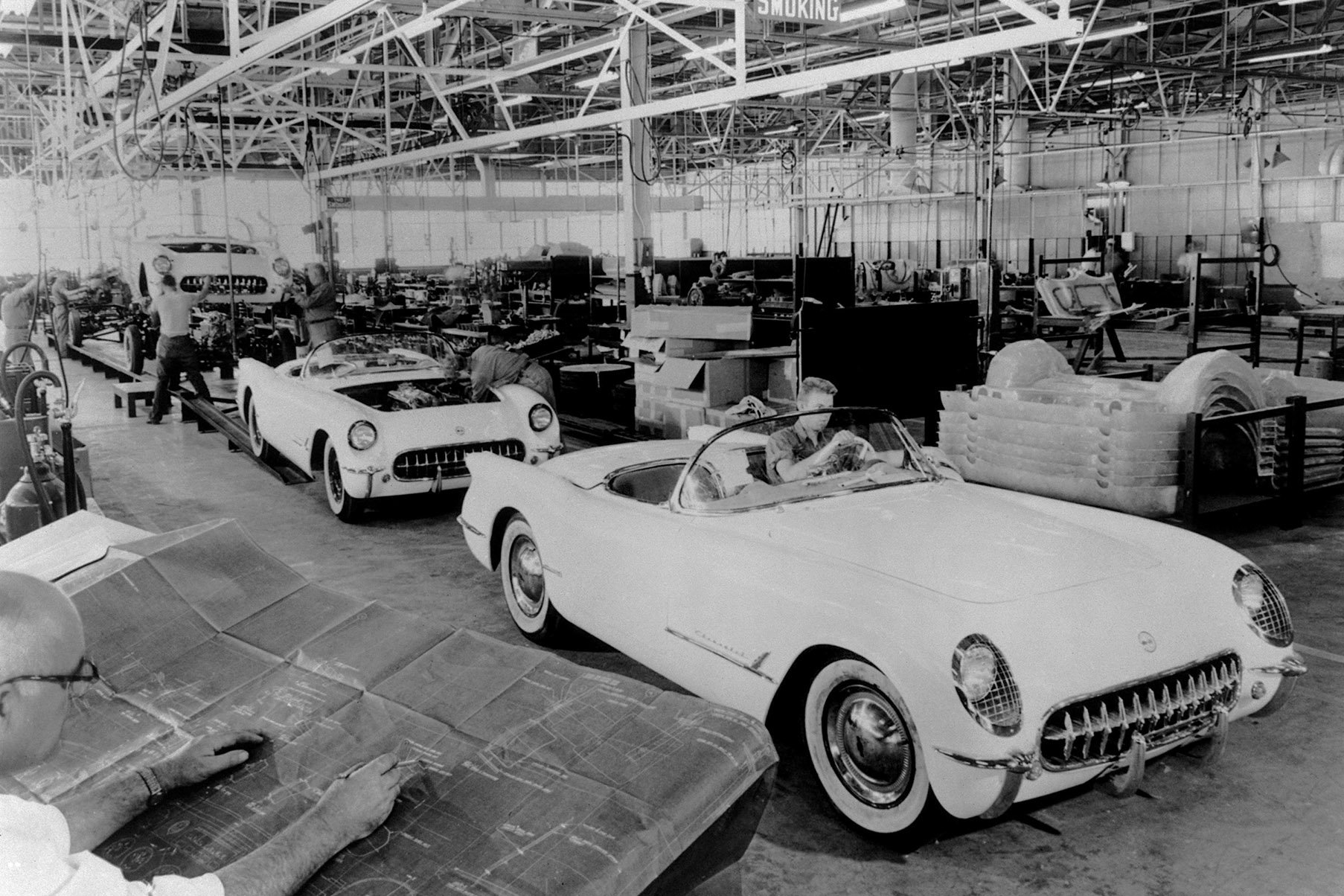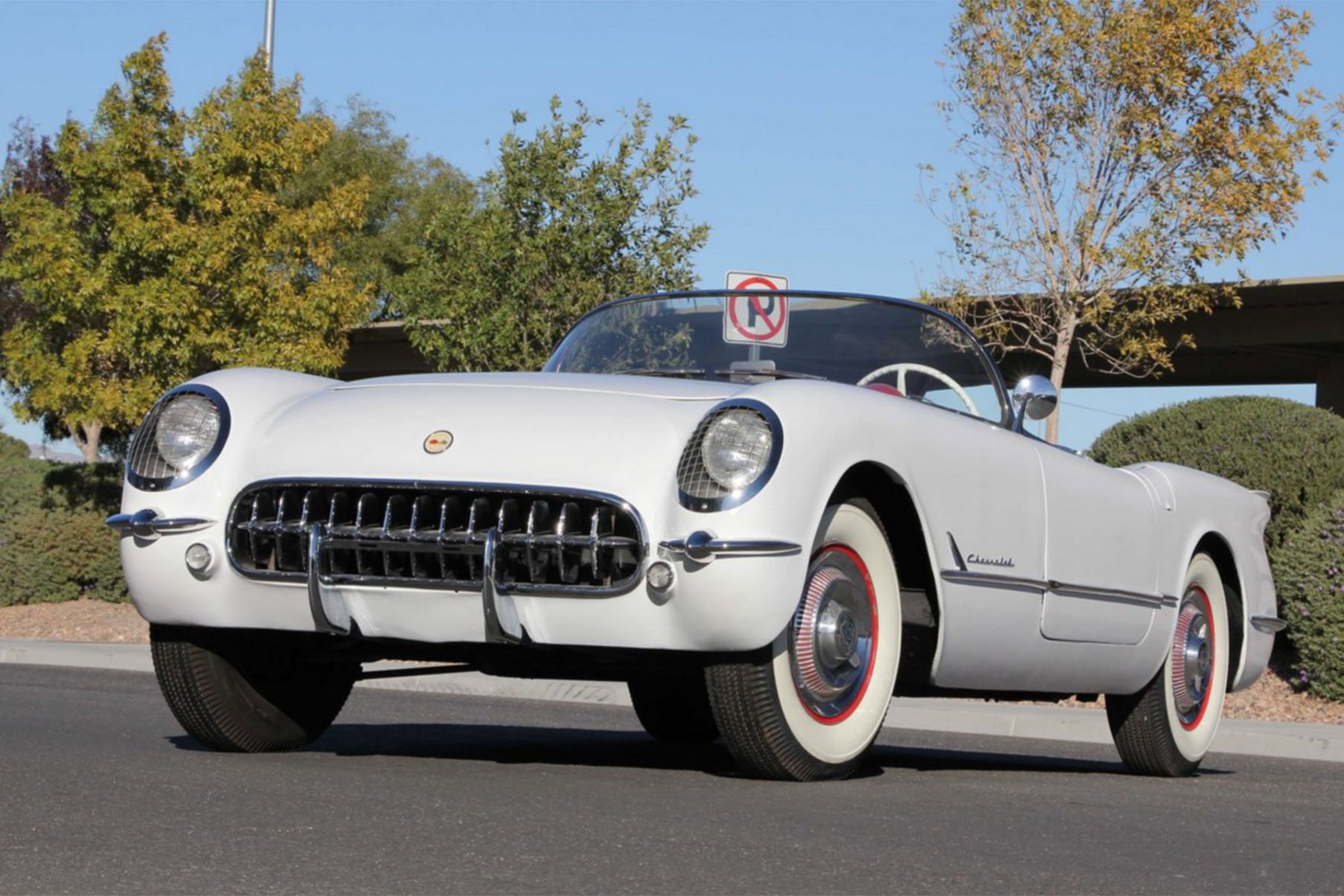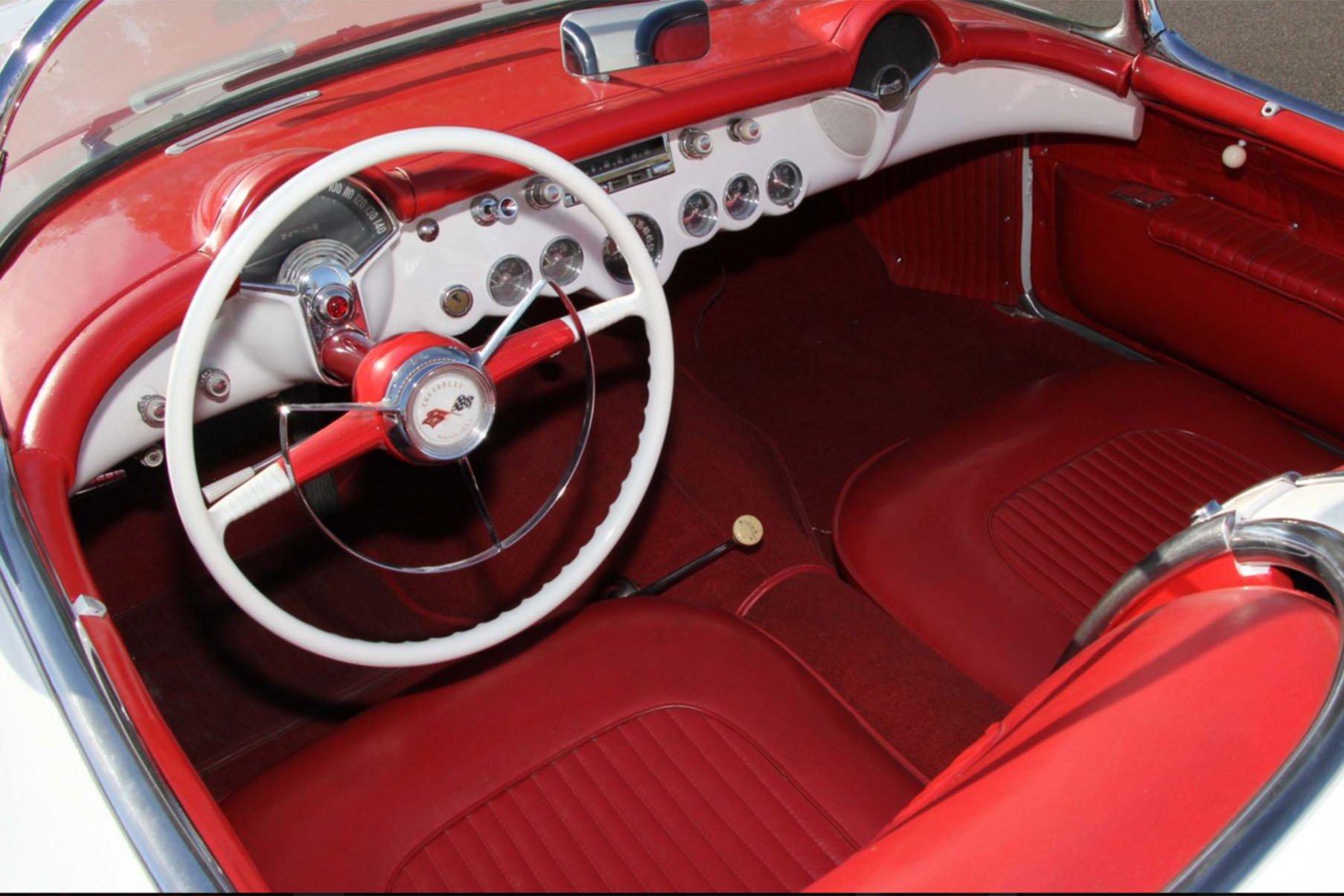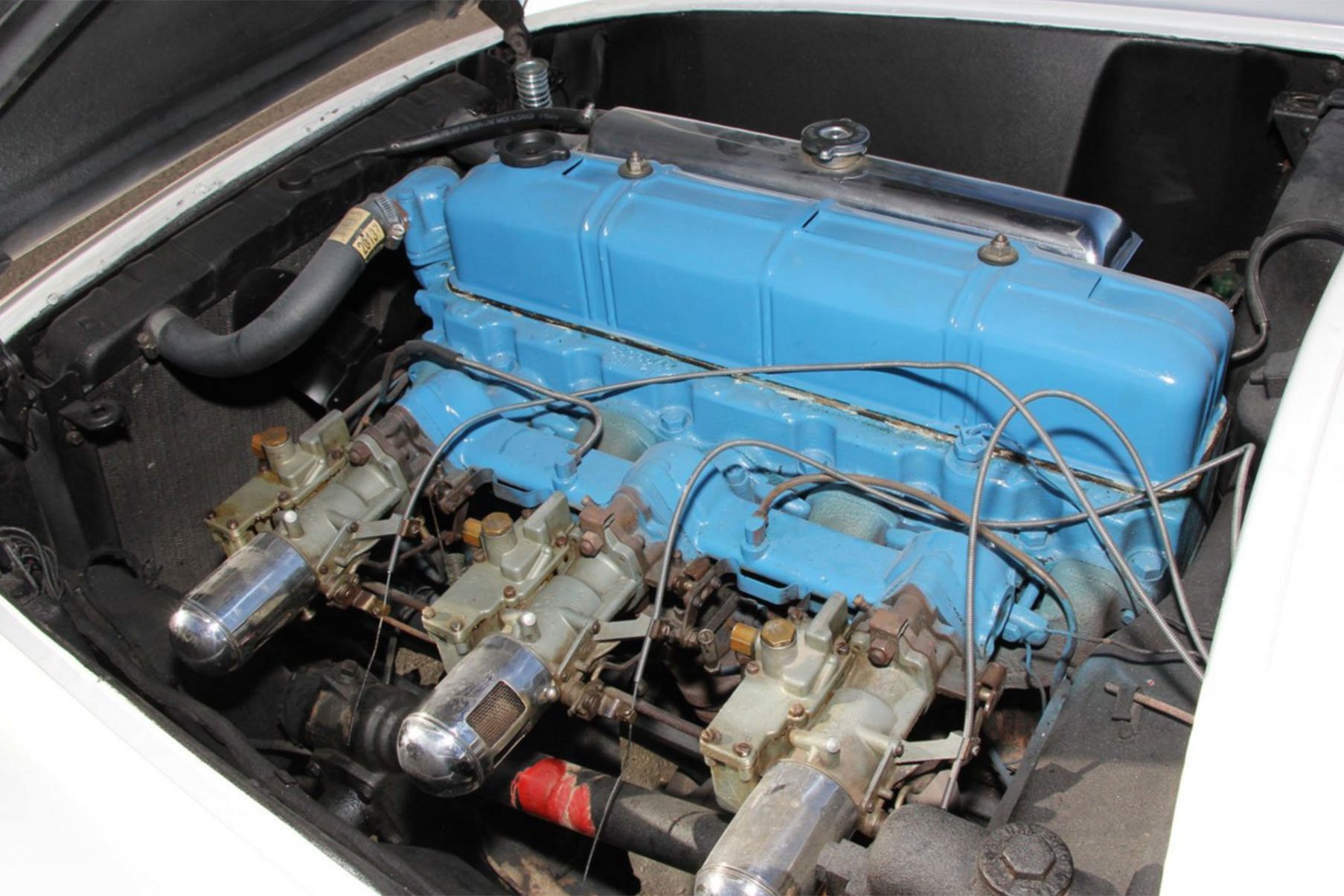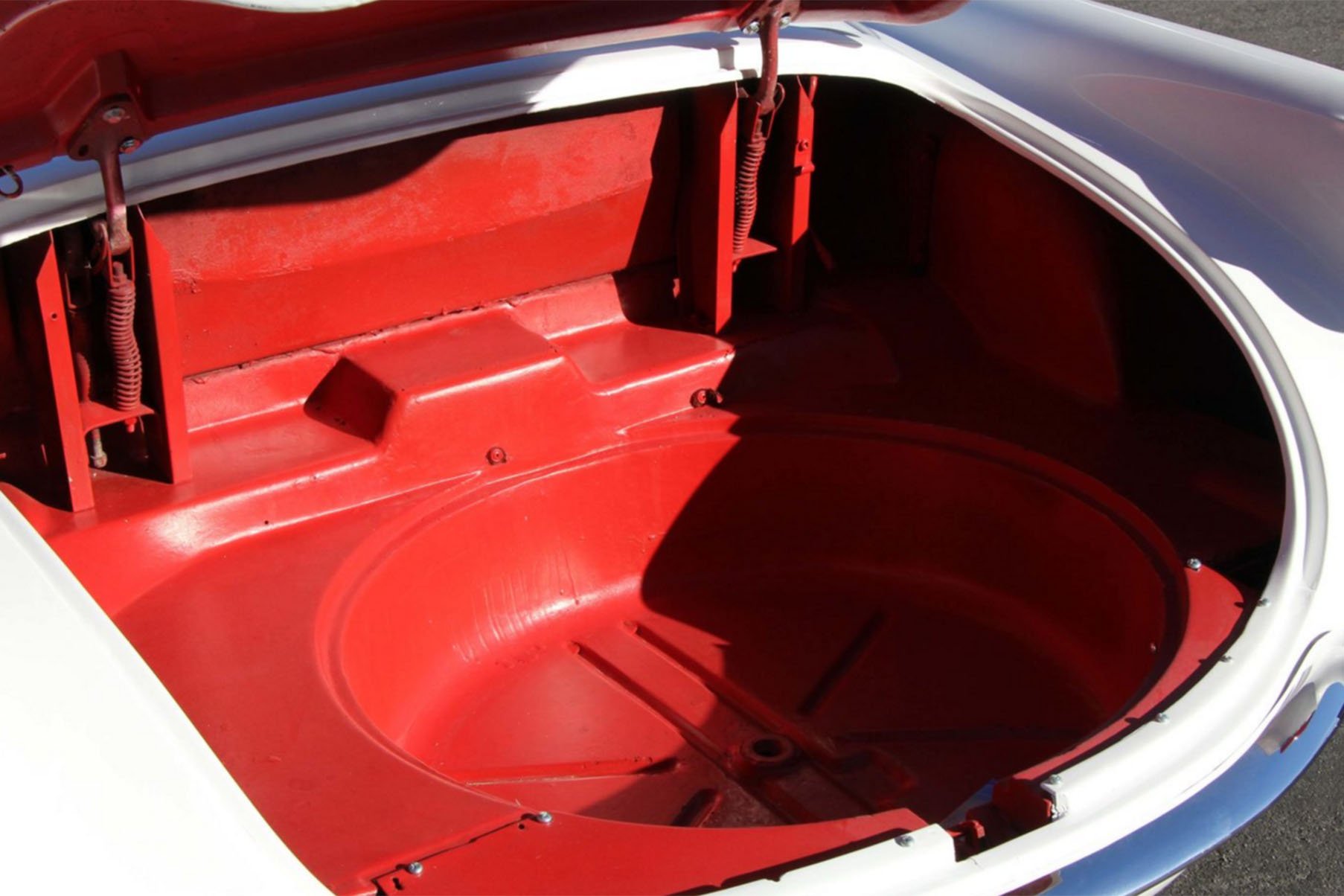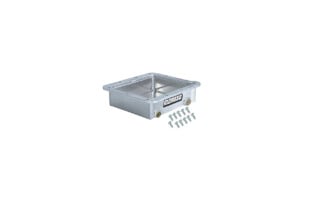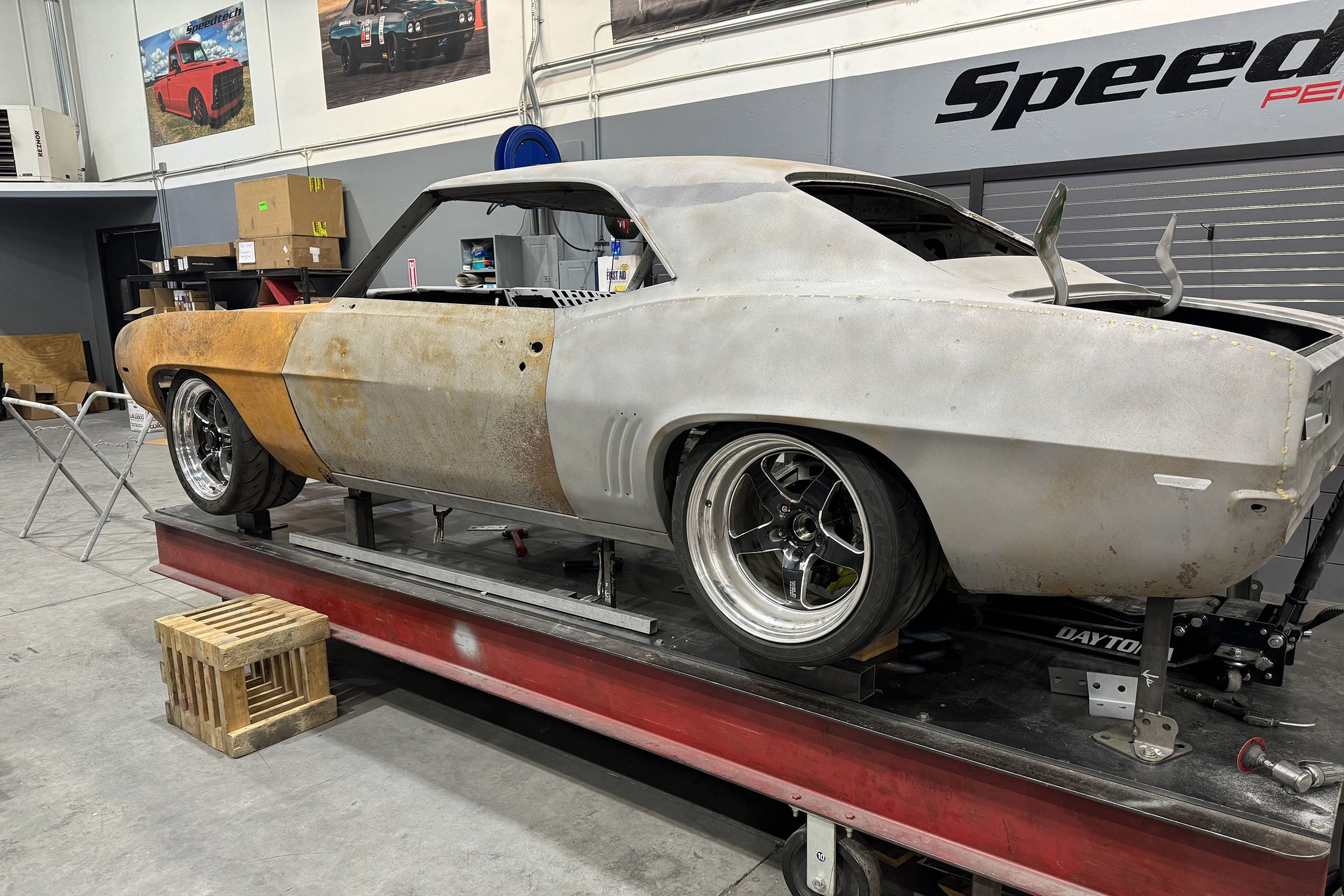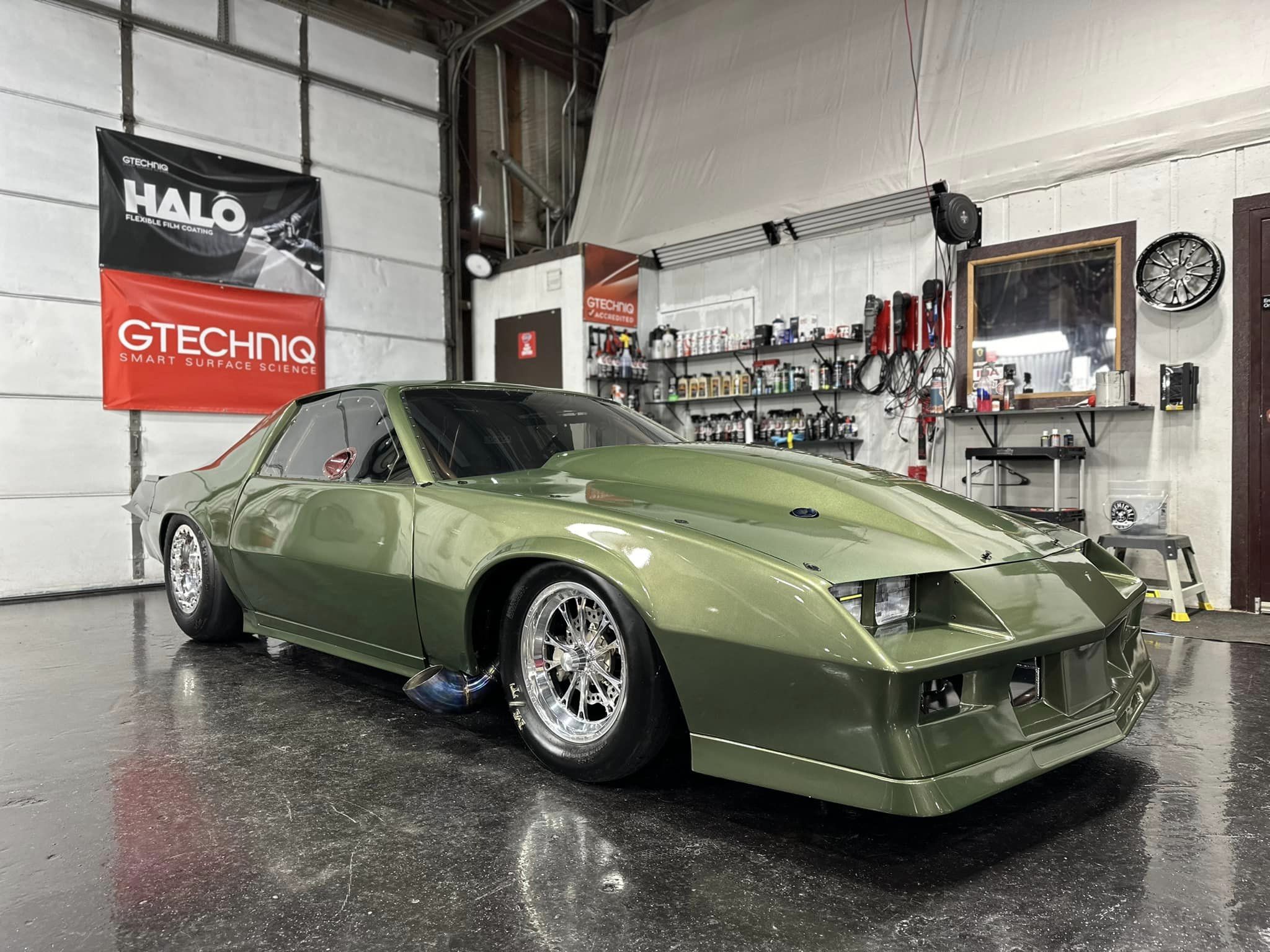It’s difficult to truly understand the full scope of impact that World War II had on society. For the automotive industry, it brought changes that would affect everything from the advent of the modern SUV to cultural milestones like the Chevrolet Corvette, an American automotive icon that’s been in production for more than six decades – the longest stretch for any production passenger car in history.
For Chevy’s two seater, WWII’s cultural influence on soldiers returning from the European stage proved to be the catalyst for its inception. But despite its triumphs over the decades since, the birth of the Corvette isn’t the immediate success story one might expect.
Path To C1
The son of a coachbuilder, Harley Earl first joined the General Motors fray when the family company, Earl Automobile Works was purchased by a Cadillac dealer in 1919 – he was kept on board to oversee operations in the dealership’s custom body shop. His father’s company had already earned a reputation for both father and son as the premier designers of custom bodies for Hollywood elites and other well-heeled clients. After exhibiting two of their latest projects at the 1919 LA Auto Show they were approached by dealer Don Lee, who would buy the company later that year and merge it with his existing coachworks operation.
Harley Earl’s success with Don Lee’s Cadillacs would attract the attention of Cadillac president Larry Fisher, who commissioned Earl in 1925 to mock up design concepts for the upcoming LaSalle model. Shortly thereafter, Fisher brought Earl on as the head of General Motors’ new design department.

Named after the smallest, most maneuverable class of warships, the Corvette’s design generated near-unanimous acclimate from the public and the press alike when it was unveiled at the GM Motorama event, which was held at the Waldorf Astoria hotel and coincided with the New York Auto Show. Image: GM
Earl had an affinity for performance, having competed in local road races using his father’s Mercer in his youth. By the early 1950s, Earl noticed a trend taking shape, as GIs returning from overseas were bringing back Alfa Romeos, Jaguars and other European sports cars.

Previous to World War II, most Americans’ exposure to European sports cars was fairly limited. But after seeing the MGs, Jaguars and Italian two-seaters available across the pond, performance-hungry GIs were chomping at the bit for a domestic sports car of their own. Image: GM
But aside from the costly Nash-Healy, no comparable models were being produced domestically. Earl went to GM’s top brass and explained the opportunity at hand, convincing them to develop a two-seater sports car that could compete with these European offerings at a price that middle class Americans could afford.
Dubbed “Project Opel”, development of the first Corvette got underway in 1951. The hand-built EX-122 pre-production Corvette prototype would make its first public appearance at the 1953 General Motors Motorama at the Waldorf-Astoria in New York City to wide acclaim, setting the stage for what would later become an institution for American high performance.
Design and Production
Despite the public’s enthusiasm for the Motorama concept, the birth of the production Corvette was far from idyllic. GM’s executives rightly saw the project as a gamble, and mandated that off-the-shelf mechanical components would underpin the new two seater to keep costs down.
To achieve a favorable weight distribution, both the power train and passenger compartment were pushed toward the rear end of the car. But aside from the light weight body work and this weight distribution engineering decision, the Corvette’s initial sports car aspirations largely ended there.
Although production would take a more traditional approach by 1954, the construction of the inaugural batch of Corvettes for 1953 was anything but. The rushed scheduling, along with the unfamiliarity of the then-new fiberglass body material resulted in inconsistent build quality as production techniques evolved throughout the year. It also limited production to just 300 cars that year, all of which were essentially hand built and equipped more or less identically to one another. Each car wore Polo White paint coupled with a red interior and a black canvas top. Images: GM
In terms of power train, this meant the tried and true Chevy 235ci inline six cylinder engine (good for 150 horsepower in “Blue Frame” trim,) would be exclusively mated to GM’s two-speed Powerglide automatic transmission since the company didn’t have a manual transmission capable of handling the Corvette’s upgraded engine at the time. In similar fashion, the first Corvette would be outfitted with garden-variety drum brakes from Chevy’s passenger car parts bin, as well as a solid rear axle suspension.
To capitalize on the enthusiasm generated at the Motorama show while the iron was still hot, production of the 1953 Corvette was hastily put together in a make-shift truck assembly plant in Flint, Michigan, with the lion’s share of assembly being done by hand using a cutting edge plastic-reinforced fiberglass for the bodies. 300 examples of Chevrolet’s new two-seater would be produced throughout the year, with production techniques evolving as each car was built. All 300 of the first-run Corvettes were outfitted with Polo White paint, red interior, and a black canvas top.
An Icon Gets A Shaky Start – And An Unlikely Savior
The combination of a rushed production schedule coupled with the use of the then-exotic fiberglass material for the body resulted in widespread quality control issues for the inaugural run of Corvettes, with owners complaining of leaks during rainstorms and doors that could unexpectedly open while driving.
While the aesthetic beauty of the first Corvette was undeniable, its shortcomings as a sports car when compared to its European rivals combined with the early build quality problems caused the Corvette’s sales to fall well below expectation in 1954, with nearly a third of the 3640 examples built remaining unsold by the end of the year despite the late addition of a dealer-installed Paxton supercharger option to improve the Corvette’s performance.
It seems almost unthinkable today, but by the end of second year of Corvette production, the model was in serious jeopardy of being canceled. A major contributing factor to the Corvette's lackluster initial sales had to do with its lackluster mechanicals. The combination of its 150 horsepower, 235 cubic inch inline six cylinder and two-speed Powerglide automatic got the '53 Corvette to 60 mph from rest in a leisurely 11.5 seconds. But in just a few years time, Zora Arkus-Duntov would reinvent the Corvette as a world-class performance car with the help of Chevrolet's new small-block V8. Images: Mecum
The Corvette’s situation was dire enough at the close of the year that General Motors’ managers considered scrapping the Corvette project altogether. However, GM’s rivalry with Ford Motor Company, who were poised to unleash a new two seater of their own with the Thunderbird in 1955, helped keep the Corvette alive.
With influence from GM engineer Zora Arkus-Duntov (who would go on to earn the nickname of the “Father of the Corvette”), along with the introduction of the company’s first small-block V8 as well as a three-speed manual gearbox coupled to a 3.55:1 axle ratio as late addition in 1955, the Corvette’s performance prowess improved substantially. Still, with only 700 models built that year, 1955 Corvettes are only trumped by the hand-built 1953 models in terms of rarity.
Legacy
Regardless of any shortcomings that the inaugural Corvette might have had, its design is undeniably iconic and the limited production run of this first batch of Chevy’s sports car makes the ’53 Corvette a highly coveted collector car.

Chevrolet’s decision to stay the course with their two seater would prove to be wise. Six decades on, more than 1.6 million Corvettes have been produced to date, and the sports car has evolved into a force to be reckoned with both on the street and in international motorsport. Image: GM
More importantly, it laid the foundation for what was to come – six decades of incredible Corvettes. By 1957, Chevrolet’s two-seater had been comprehensively transformed by Duntov and his team into a world-class sports car with the performance credentials required to back up its sharp design. By the time the first generation car was ready to bow out for the introduction of the C2 Stingray for 1963, production had more than quadrupled from 1954’s run of 3640 cars.
In the years since, five more generations of Corvettes have been unleashed upon the unsuspecting public, with numerous special edition models along the way. Today, the seventh generation Corvette remains one of the world’s most capable and sought-after sports cars that money can buy – all the while remaining a chariot that Joe Sixpack can realistically aspire to put in his garage. For that reason alone, the original ’53 Corvette will always hold its rightful spot in sports car history.




